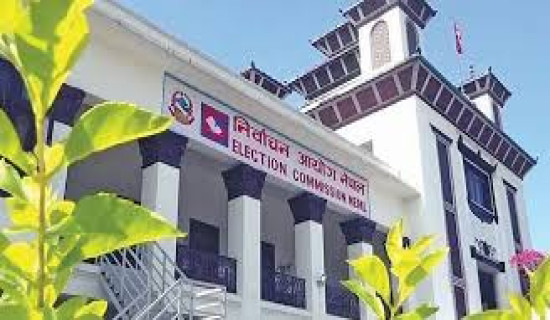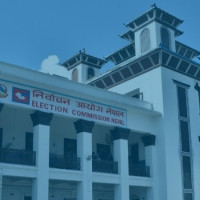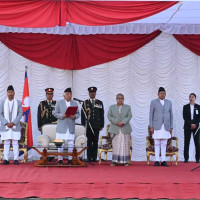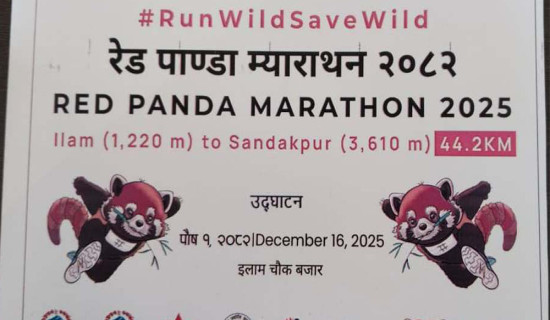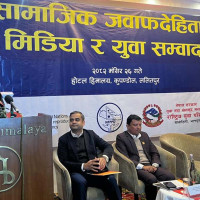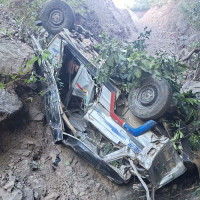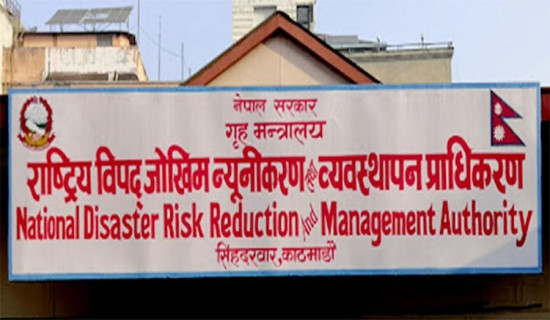- Friday, 12 December 2025
Gen Z Uprising And Its Aftermath
The Gen Z-led protest that began on September 8, 2025, is of immense historical importance for Nepal. It demonstrated not only the frustration of a generation but also the power of new modes of expression in the digital era. What unfolded in the streets and on social media surpassed the imagination of the generations before them. Conducting a mass, largely peaceful demonstration without centralised leadership or physical organisation—but instead through social media platforms—sent an unwritten statement: the youth of today are not to be taken for granted.
They have mastered the digital tools at their fingertips and shown extraordinary courage in marching ahead both virtually and physically. Their protest reflected deep-seated dissatisfaction with corruption and disillusionment with the political establishment. Unlike the generations before them, who chose leaders and abided by instructions even when those leaders were corrupt or ineffective, the Nepali Gen Z refused to be bound by traditional hierarchies. They did not elevate just one or two figureheads. Though social media amplified certain names — such as Sudan Gurung of the NGO Hami Nepali — the youth themselves, and Gurung too, were quick to clarify that this was not a leader-centric movement. Instead, it was a collective uprising where every young voice mattered.
Significant step
Nepal has witnessed regime changes before, but these were usually the result of decades of systematic organising by political parties and cadres. This time was different. The Gen Z movement toppled what is widely considered one of the most corrupt governments in the country’s history in just days. In another significant step, they used digital platforms such as Discord, Facebook, Instagram, TikTok and X (formerly Twitter) to rally support and collectively endorse former Chief Justice Sushila Karki as the head of the interim government.
With the appointment of Karki as the new Prime Minister, Nepal witnessed the shattering of two glass ceilings. She had already made history as Nepal’s first female Chief Justice; now she became the nation’s first female Prime Minister. Her track record of zero tolerance for corruption has earned her admiration from many citizens, though it has also created powerful enemies among politicians accused of amassing immense wealth. The youth’s decision to back her as the head of the caretaker government was a sign of both their maturity and their vision for a cleaner political culture. Yet the aftermath of the movement has also been costly and disruptive to the nation’s development.
On the morning of September 11, a relative from Dillibazaar — one of Kathmandu’s oldest residential areas — called with alarming news: several prisoners were wandering outside their wall. They had escaped from Chaar Khal Adda prison. Some were quickly captured by the army, but many fled. Media outlets estimated that between 13,000 and 15,000 prisoners escaped from prisons nationwide during the chaos that erupted after police shot 19 young protesters at point-blank range on September 8.
The initial movement began with demands for accountability, employment opportunities and access to education. But as news of the killings spread, public anger boiled over. Within days, 72 people were reported dead, and more than 1,500 were injured, who are receiving treatment in different hospitals. The protests, once peaceful, gave way to widespread vandalism and destruction. Government buildings, political party offices, the Supreme Court, residences of leaders accused of corruption, luxury hotels, and commercial centres became targets. From the second day onward, Kathmandu and other cities witnessed arson, looting, and destruction on an unprecedented scale.
Economists now estimate property damage in the billions of rupees, with the tourism industry—just beginning to recover from the COVID-19 pandemic — hit especially hard. Insurance companies are bracing for claims of around Rs. 50 billion. Despite army intervention, arson and looting continued for days, raising questions about the role and preparedness of the fire brigade and security forces. The mass prison break created additional security concerns. While some escapees have since been recaptured and others voluntarily returned, many remain at large. Authorities believe several fugitives crossed into India through the open border. Security forces have confirmed arrests near frontier towns, but the overall situation remains precarious.
Throughout this crisis, two personalities stood out as steady guardians: President Ramchandra Paudel and Nepal Army chief Ashok Raj Sigdel. Despite the risk of political interference and the possibility of pro-monarchy elements like Durga Prasai exploiting the chaos, both leaders maintained calm. At one point, President Paudel was rumoured to be under house arrest, but his quiet listening to the youth and his eventual support—backed by the army—allowed the formation of an interim government. Their restrained leadership provided the stability needed at a critical moment.
Daunting task
Now the task ahead is daunting. On September 12, the new government announced that elections for the 275 members of the House of Representatives will be held on March 5, 2026. In the meantime, Karki’s Cabinet has to get a full shape, restore basic governance, and deliver administrative, executive, and judicial functions—even though many offices and buildings have been destroyed. Transportation networks and communication systems across the country have also been severely damaged. The Gen Z movement insists that it did not engage in arson and vandalism, pointing instead to vested groups that hijacked the protests for their own interests. While this claim seems credible given the scale and coordination of some of the attacks, these groups remain unidentified.
Their actions, however, have left a lasting scar on the movement and raised questions about the cost of such rapid upheaval. The youth have proven their power. Now the question is whether Nepal’s institutions can rise to meet the moment. The road to March 2026 is not paved with roses, but it offers the possibility of a new political culture — one forged in the digital era and powered by a generation unwilling to repeat the mistakes of the past.
(Sharma is a senior journalist and women's rights advocate and namrata1964@yahoo.com X handle: @NamrataSharmaP)



